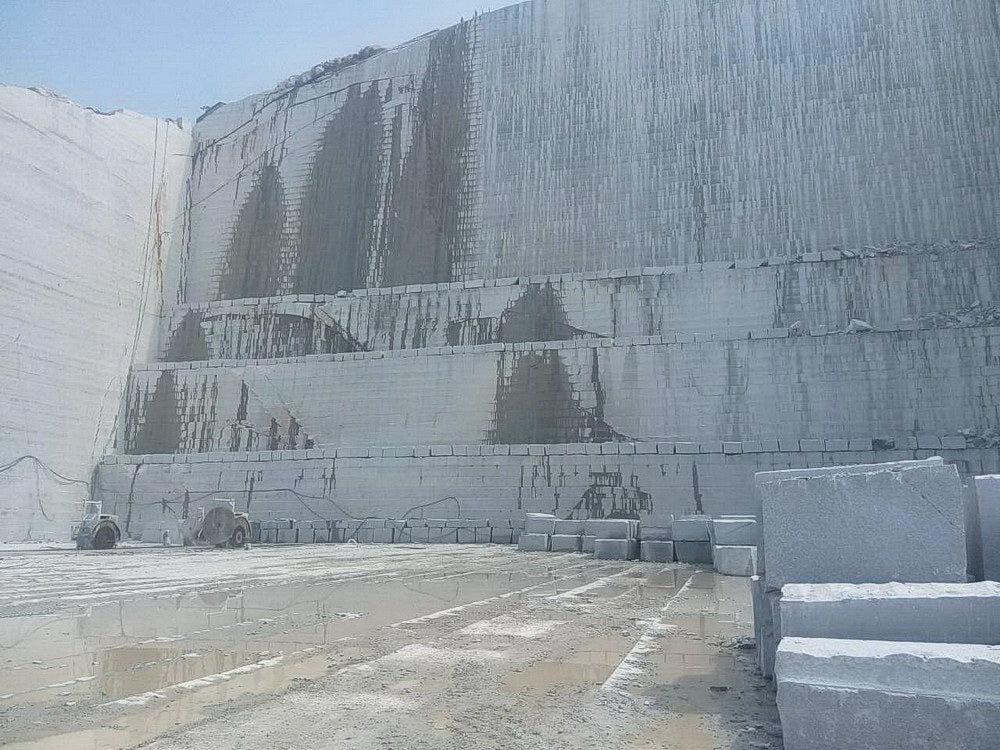The Covert Gems: Exploring Granite Quarries in South Africa
The Covert Gems: Exploring Granite Quarries in South Africa
Blog Article
Introducing the Mysteries of Granite Quarrying: Where Toughness and Elegance Meet
The world of granite quarrying is a world where the raw toughness of nature merges with human artistry to create structures that stand the test of time with an air of sophistication. From the midsts of quarries to the thorough polishing in workshops, the process of transforming granite into architectural marvels is a complicated dancing of custom and technology. As we peer right into the midsts of this old craft, we start to reveal the hidden intricacies that shape the very essence of our built environment.
The Origins of Granite Quarrying
In the annals of architectural history, the origins of granite quarrying are shrouded in a tapestry of old workmanship and geological wonders. Going back to old Egypt and Mesopotamia, the removal of granite from quarries marked the beginning of a journey that would eventually lead to the creation of some of the globe's most legendary frameworks.
Granite quarrying's origins can be mapped to the proficient artisans who recognized the rock's durability and visual allure. With a combination of primitive tools and large resolution, these very early quarry workers unearthed granite blocks that would certainly come to be the structure blocks of worlds.
As worlds evolved, so did the strategies of quarrying granite. The Romans, renowned for their engineering expertise, created sophisticated methods for removing granite to create monuments, temples, and roadways that stood the test of time.
The legacy of these old quarrying methods remains to form modern style, with granite continuing to be a sign of strength and sophistication in building projects around the world. (granite quarries in south africa)
Tools of the Quarrying Profession
The development of granite quarrying techniques from old civilizations to modern-day times highlights the vital role played by the devices of the quarrying sell shaping the market's techniques. In ancient times, quarrying devices were basic, typically including blades, hammers, and wedges made from materials like bronze or iron. These devices called for considerable manpower and time to remove granite blocks from quarries.

Additionally, the intro of pneumatically-driven devices and high-powered equipment has considerably decreased the physical labor needed in quarrying operations, enhancing employee safety and security and efficiency. As the quarrying market continues to innovate, the devices of the profession stay at the forefront of driving progress and forming the future of granite removal.
Drawing Out Blocks of Granite
Utilizing precision equipment and progressed techniques, the removal of granite obstructs from quarries has become an innovative procedure in the contemporary quarrying industry. The first step involves recognizing the place and size of the granite down payment to figure out the most useful content reliable removal method. As soon as an appropriate site is picked, the extraction procedure starts with the boring of openings for the positioning of explosives. Regulated blasting strategies are then employed to disintegrate the granite into convenient sections.

Polishing and Finishing Methods
To attain a flawless surface on granite blocks, knowledgeable artisans utilize a collection of thorough polishing and completing strategies. After the initial extraction and shaping procedures, the granite obstructs undertake a comprehensive sprucing up stage to boost their natural charm and toughness.
Along with polishing, finishing methods are put on more improve the granite's appearance. These techniques may include flaming, developing, or cleaning, each offering one-of-a-kind appearances and coatings to suit different aesthetic preferences. Flaming, for instance, involves exposing the granite surface to heats to produce a rough, textured surface, suitable for outside applications where slip-resistance is vital. Refining, on the various other hand, supplies a matte surface that is smooth to the touch, best for interior counter tops and flooring. By very carefully choosing and applying these polishing and finishing techniques, craftsmens can change raw granite obstructs into splendid pieces that showcase both toughness and style.

Environmental Effect and Sustainability
With the expanding emphasis on ecological awareness in the industry, directory granite quarrying methods are significantly scrutinized for their effect on natural deposits and long-lasting sustainability. Quarrying for granite can have substantial ecological implications. The extraction procedure often includes the usage of hefty equipment, explosives, and big quantities of water, bring about habitat destruction, soil disintegration, and water air pollution. In addition, the transportation of granite from quarries to processing facilities produces carbon discharges, better adding to environmental degradation. granite quarries in south africa.
To mitigate these impacts and ensure sustainability in granite quarrying, industry stakeholders are adopting various measures. Implementing more information advanced technologies to reduce power intake and water use, recovering quarried land for environmental remediation, and promoting responsible sourcing practices are some approaches being used. Additionally, accreditations such as the Forest Stewardship Council (FSC) and the Management in Power and Environmental Style (LEED) help customers recognize ecologically friendly granite products.
Verdict
Finally, granite quarrying is a procedure that needs specialized devices and methods to remove blocks of granite and polish them to a high degree of finish. While the ecological impact of quarrying can be substantial, efforts are being made to enhance sustainability practices in the market. Overall, granite quarrying is a delicate equilibrium between taking advantage of the strength and sophistication of this all-natural stone while decreasing its impact on the atmosphere.
Report this page